A review of the Rolex Explorer ref 14270
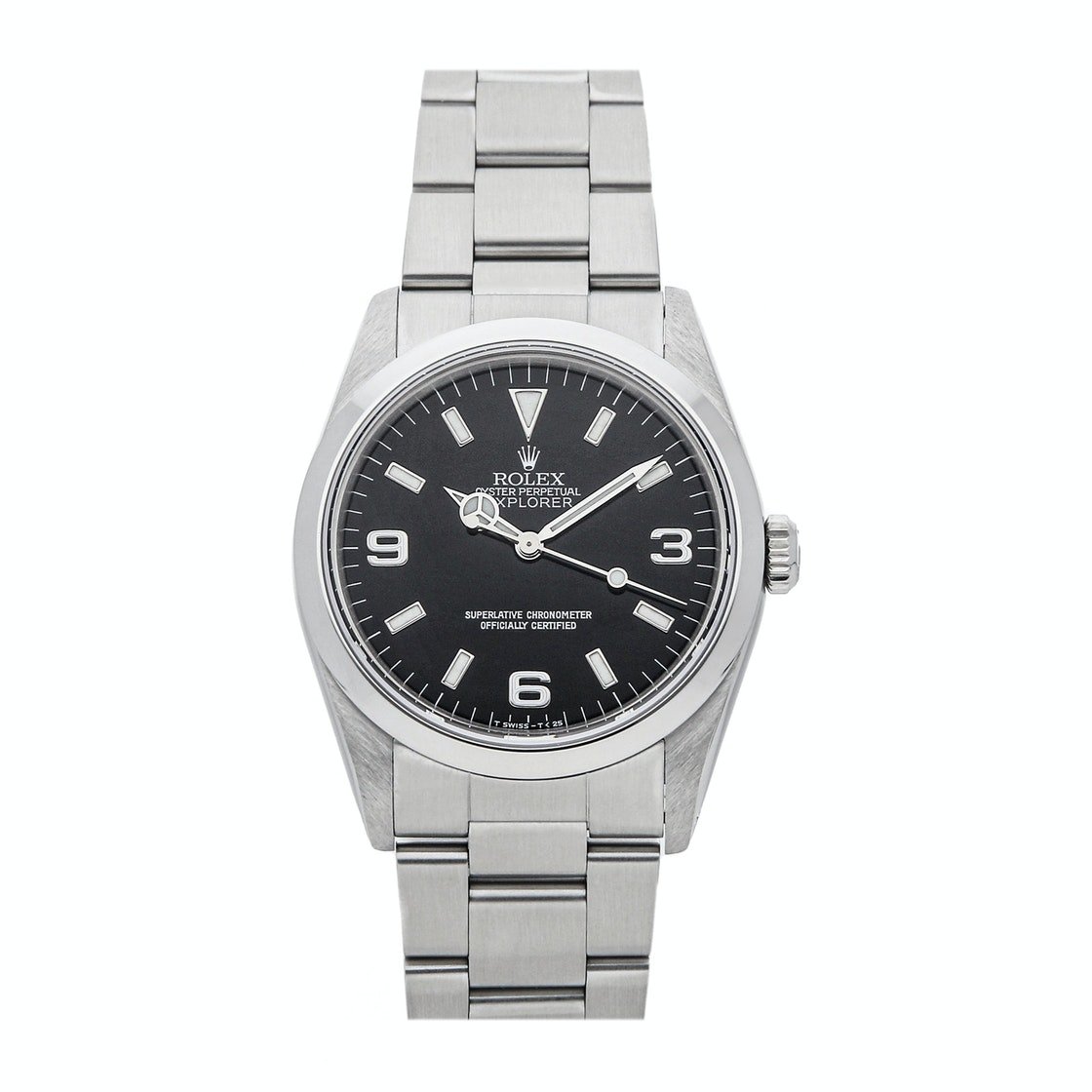
Published: Nov 22, 2021
The Rolex Explorer ref 14270 is a vastly underrated timepiece within elite watch collecting circles. Although not quite old enough to be considered vintage and not recent enough to be classed as a young release - it does have a somewhat cult-like following amongst those who can appreciate it for its value and its unique place within the history of horology. Many Rolex fans associate the Rolex Explorer 14270 with being the brand’s first modern sports watch. Its simple execution means it often goes under the radar when discussing some of the brand’s most famous and highly-collectable timepieces. To gain a thorough understanding of just what makes the Rolex Explorer ref 14270 watch so special, an insight into the history of the watch and how it came to be is essential. Here is a brief introduction to the history of this Rolex Explorer watch, complete with a detailed review of all its features.
A brief history of the Rolex Explorer
Just last year, the ref 14270 Explorer watch reached its 30th anniversary. It belongs to the Rolex Explorer collection which was born of a need for a tool watch to accompany Sir Edmund Hillary and Tenzing Norgay on their expedition to Mt Everest in 1953. The first Explorer was a 36mm model that followed on from the white Rolex Oyster Perpetual Superlative Chronometer selected for the expedition. The marketing strategy harnessed by Rolex showed the world just what the Oyster case was capable of withstanding, having returned home fully intact to tell the tale of its daring mission.

The O.G.
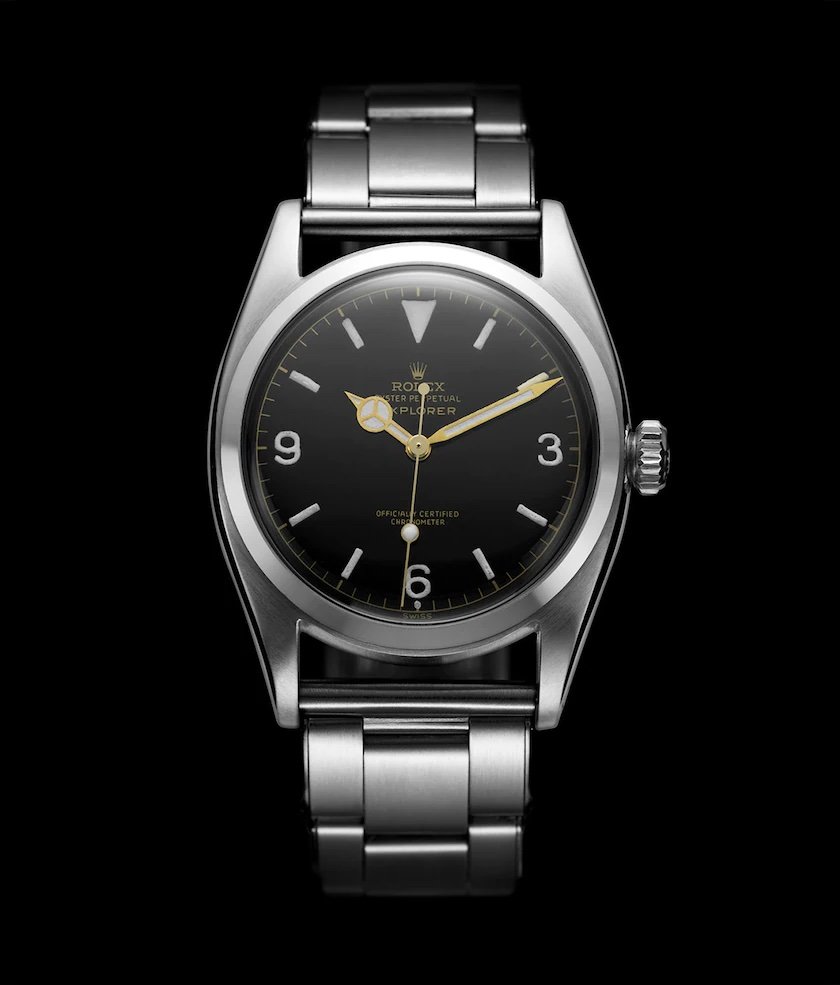
Many avid Rolex watch collectors associate the year 1953 with the release of the brand’s iconic Submariner dive watch. But it was also a year that marked the release of the 6350 version of the Rolex Explorer. It not only featured the “Explorer” name emblazoned across the surface of its dial but also boasted Arabic numerals at 3, 6 and 9 o’clock – the foundations that forged the future of the popular line. The Rolex Explorer 6350 became known as the “honeycomb”, thanks to its unique-looking pattern across the surface of its black dial and has since become a rare and highly sought-after model. This was followed by the release of the Explorer ref 6610, complete with a matte black dial and gilt Arabic numerals.
The case
The Rolex Explorer ref 14270 has a neat set of dimensions. Lug to lug, the watch measures a 43.6mm diameter. Combined with a 36mm bezel width and a height of just 11mm, these measurements make for a very compact and practical tool watch to wear on the wrist every single day of the week. Its stainless steel Oyster case sits very comfortably alongside casual, formal or elegant wear. Donating a somewhat dressier feel to the design is the lack of a crown guard. There is also a line and a crown logo engraved upon the surface of the crown that signifies the integration of Rolex’s “Twinlock” crown tube technology and the case offers a water-resistant capability of 100 meters.

Released in 1963 was the Explorer ref 1016, which remained in production for a total of 27 years. A host of variations were released during this time, including models with a solid link bracelet, an Albino dial, the Space-Dweller and models with a gilt underline. This brings us to the rebirth of the Rolex Explorer watch – the ref 14270, which debuted at Basel in 1989. The watch launched in a time of great change for Rolex. The brand had begun modifying many of its popular timepieces during this time, including the iconic Submariner dive watch. That said, the release of the 14270 model had a design language that stayed very true to the Explorer DNA. The main differences were the dramatic update of the dial and the addition of a new movement. Interestingly, the watch has received so many changes in its 11 years of production that it is now considered quite the collectable by some.
A detailed look at the Rolex Explorer ref 14270
The evolution of the reference 14270 can be categorised into four periods for ease of simplifying. The “Blackout” generation refers to those models that were manufactured during the years 1989 – 1991, whilst the “T-Swiss” phase refers to those models made during the years 1991 and 1998. The “Swiss Only” generation are those manufactured between 1998 and 1999, whilst the “Swiss Made” models ran from 1999 up until the end of the production run in 2001. Those with serial numbers occupying E and X letters relate to the “Blackout” stage and these models are the earliest on the timeline, thus some of the rarest. From the years 1991 to 1993 the dial of the Explorer evolved into a glossy black lacquer dial that went by the nickname “Frozen” dial Explorer. Between 1994 and 1996 the Explorer went from a lug hole case to a no-lug hole case, followed by tritium dials debuting between 1996 and 1998 and a flip-lock clasp.

Blackout Dial
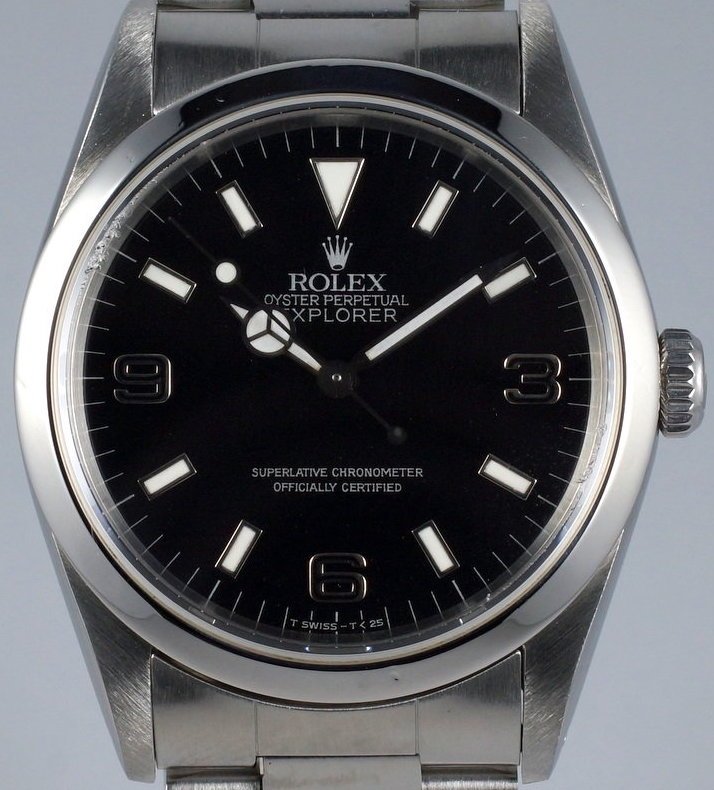
The “Swiss Only” Ref.14270 legacy began reaching wrists between 1998 and 1999. They represented the replacement of tritium to Super-LumiNova material on their dial elements and a change in the print at the bottom of the dial from the old "Swiss T" to the "Swiss" lettering. Those with the letter P in their references refer to the last generation of models. Those in the “Swiss Made” category featured Super-LumiNova dial elements and, of course, the “Swiss Made” lettering across the dial.
Elevating the elegant styling of this Explorer model is the choice to equip the case with a smooth and polished bezel, which creates a refined frame around the black dial. This tool watch can transform from a practical instrument to something softer and classier when paired with evening attire or a smart suit for the office thanks to the sophisticated essence of its metal Oyster bracelet.
The dial
If balance and clean, harmonious proportions are important to you in the dial of a watch - the Rolex Explorer ref 14270 is sure to impress. It is one of the most modest, understated and simple dial designs from the brand’s entire historical catalogue. The 3-6-9 Arabic numeral hour track is married with baton hour markers to ensure that the time can be read quickly and effectively. As advised, depending on the year of production, the essential timekeeping elements on the dial are either finished in tritium or Super-LumiNova.
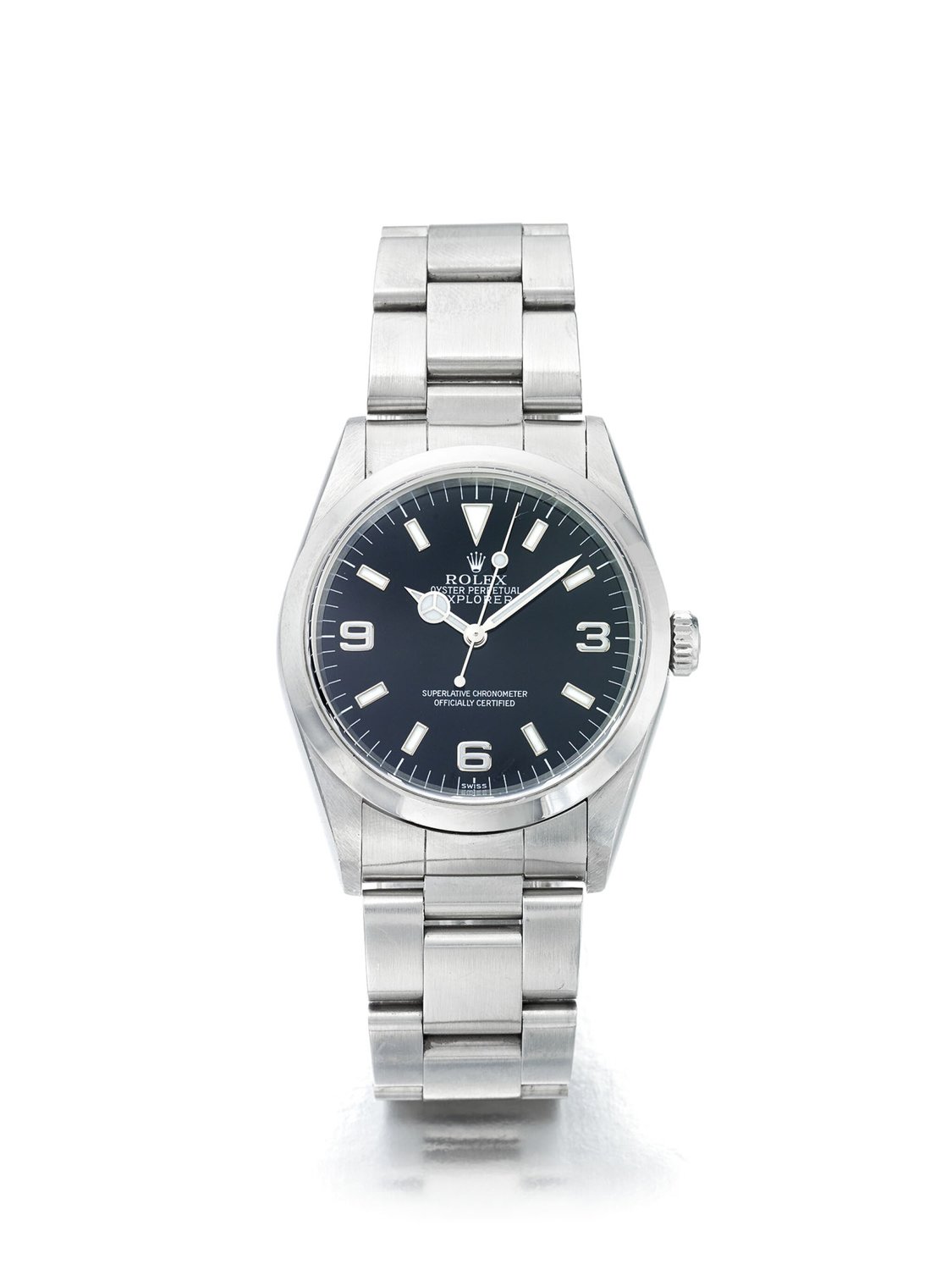
Swiss Only Dial in Details

Frozen Dial
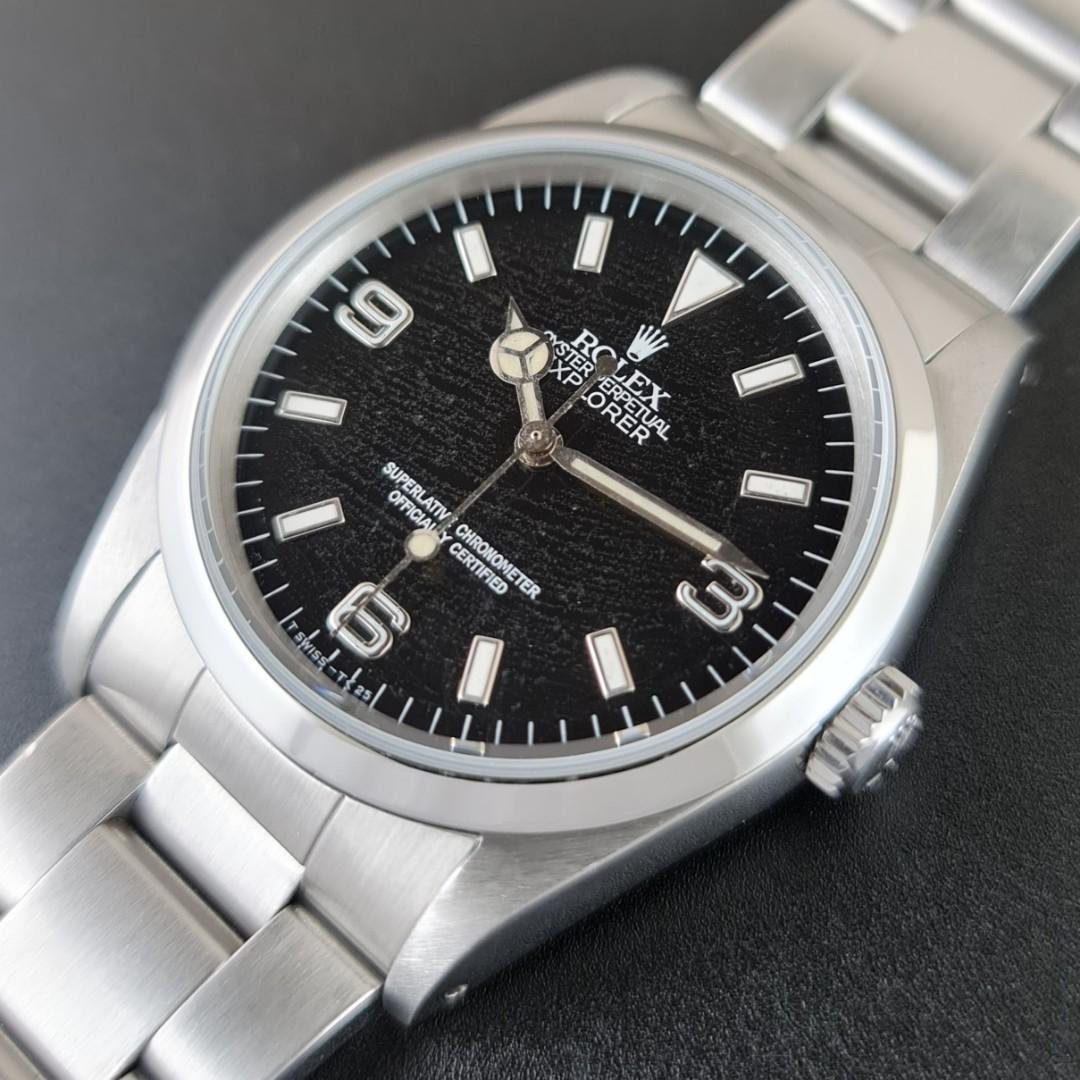
The movement
Predecessors of the ref 14270 such as the 1016 watches were driven by the Calibre 1570, which was replaced by the Calibre 3000 by the time the 14270 came along. This self-winding mechanical movement can produce up to 48 hours of power reserve once fully wound and beats inside the watch’s robust steel Oyster case, performing at a rate of 28,800 vibrations per hour. Not bad for a watch aged over 30 years old, the automatic movement also comes equipped with 27 jewels and features a central rotor and hacking seconds.
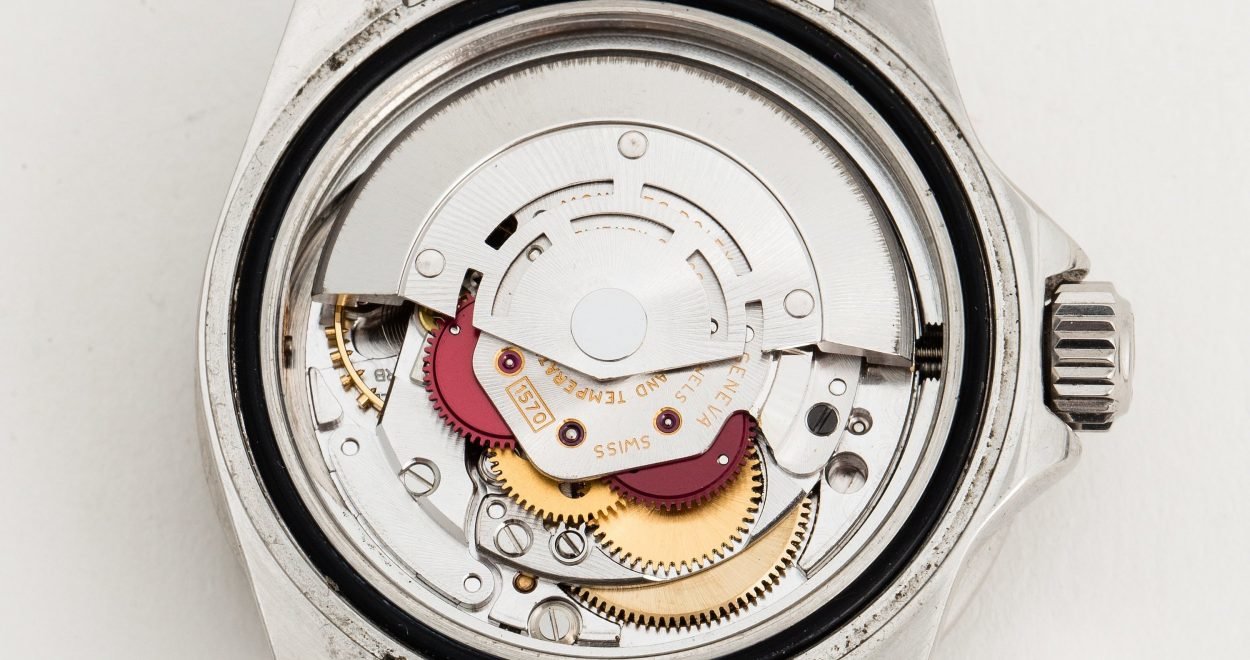
The Calibre 3000 is an interesting movement in the fact that it was the last not to feature Breguet’s overcoil hairspring. Instead, it featured a flat hairspring and still achieved chronometer certification despite having no regulator but a Rolex Microstella instead. It promised an accuracy of +4/-6 seconds per day and was shielded from external damage inside the brand’s Kif shock protection system. This golden three-leaf, four-leave or clover-shaped spring clip adorned with a ruby at the top of the balance was Rolex’s alternative to Incabloc shock system technology during this period.
The bracelet
If the evolving dials of the 14270 series of Rolex Explorer watches are too confusing, one key indicator to show the age of a particular variant can be found in the design of its bracelet. Some Explorer watches were known to leave Rolex’s factory with a 93150 dive-style oyster bracelet clasp configuration with longer and thicker clasps and a built-in diver extension facility. The single Oyster clasp, however, is a signature element of the Explorer line, and thus, the beginning of the manufacturing period of the 14270 is identified by a bracelet with oyster-style links and a single stamped oyster clasp. It was the year 1996 when we began to see the bracelet of the Rolex Explorer watch fitted on a flip-lock clasp, making it much more secure on the wrist.

Despite the many configurations and dial variants of the Rolex Explorer ref 14270, what seems to be consistent is the watch’s timeless and enduring style. Thanks to its simple dial, modern-day collectors are still seeking the modesty and clarity offered by the Explorer models from this 11-year production run. The timepiece represents something entirely unique – a watch that has evolved in several ways whilst never straying too far away from its core design. It is this principle alone that has led to the allure of this desirable, if not sometimes underrated, Rolex Explorer watch.
More Guides:
To find out more about which Rolex hold their value you can read more of our guides where we cover all Rolex Nicknames or our classic guide to the Day Date models and our comparision with their sister brand: Rolex vs Tudor.
Subscribe our newsletter for more news related content and find our quick comparitive guides to help you decide which watch you should buy next: